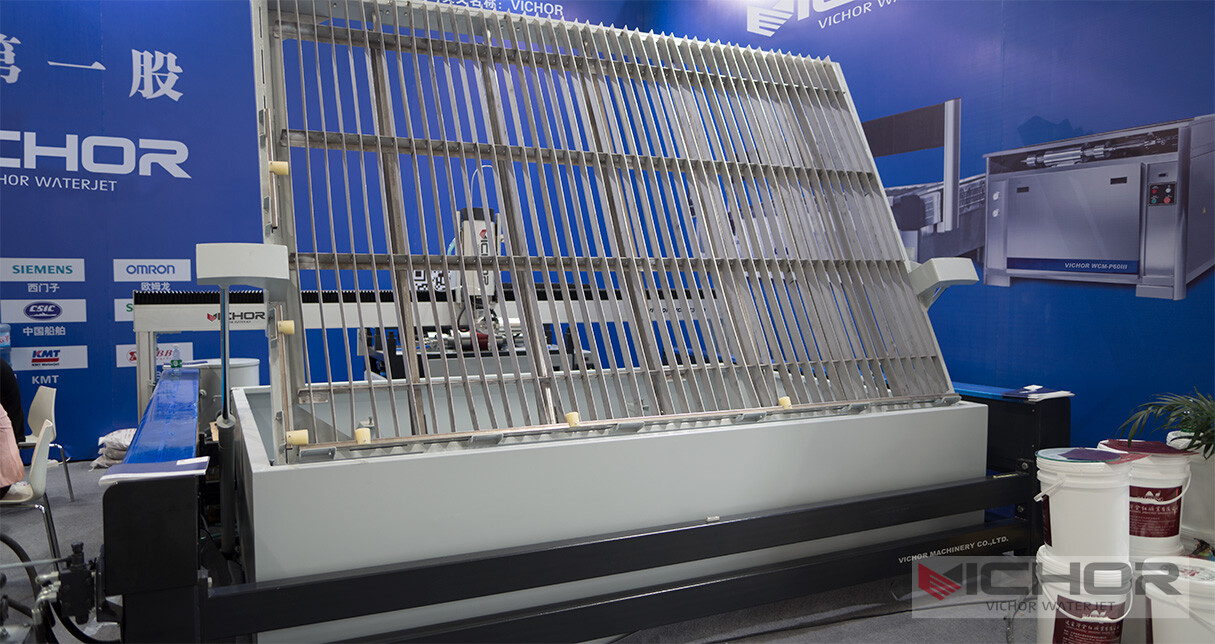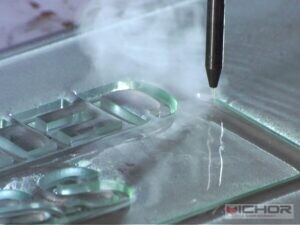
Custom Waterjet Cutting: 5 Key Benefits Transforming Modern Manufacturing
In the relentless pursuit of precision, efficiency, and versatility in manufacturing, custom waterjet cutting has emerged as a transformative force. Unlike standard cutting methods bound by limitations, custom waterjet systems are engineered or configured specifically to meet the unique demands of complex projects, diverse materials, and stringent tolerances. This bespoke approach unlocks unparalleled capabilities, making custom waterjet solutions indispensable across a vast spectrum of industries. Let’s delve into five crucial aspects that define the power and potential of custom waterjet technology.
1. Unmatched Precision and Complex Geometry Capabilities
At the heart of custom waterjet cutting lies its extraordinary ability to achieve intricate cuts with exceptional accuracy. Standard cutting methods often struggle with sharp corners, fine details, or complex internal features. A custom waterjet system, however, excels in this domain.
Computer-Controlled Accuracy: Driven by advanced CNC (Computer Numerical Control) systems, custom waterjet machines follow digital designs (CAD files) with micron-level precision. This eliminates human error and ensures consistent replication, part after part.
Kerf Characteristics: The waterjet stream, especially when enhanced with abrasive garnet, produces a very narrow kerf (cut width). This minimizes material waste and allows for tighter nesting of parts on a single sheet, optimizing material utilization – a significant cost factor. Custom waterjet setups can be fine-tuned for specific kerf requirements.
No Heat-Affected Zone (HAZ): Crucially, waterjet cutting is a cold process. There is no thermal distortion, hardening, or micro-cracking along the cut edges. This is paramount for materials sensitive to heat, such as certain aerospace alloys, tempered glass, or heat-treated steels, where preserving the base material properties is non-negotiable. A custom waterjet ensures the integrity of these sensitive materials.
Undercutting and Taper Compensation: Advanced custom waterjet systems incorporate sophisticated software algorithms and dynamic cutting head control to actively compensate for the natural taper that can occur in thicker materials. They can also be programmed to create precise undercuts and bevels, essential for complex assemblies and welding preparations.
2. Unrivaled Material Versatility: Cutting (Almost) Anything
Perhaps the most compelling argument for custom waterjet technology is its near-universal material compatibility. It is truly a “one tool cuts all” solution, eliminating the need for multiple dedicated machines.
Metals: From delicate foils and thin sheets of aluminum, copper, and brass to thick plates of hardened tool steel (up to 12 inches or more), titanium, Inconel, stainless steel, and armor plating. A custom waterjet handles them all without changing the fundamental cutting process.
Stone and Tile: Granite, marble, slate, limestone, porcelain, and ceramic tiles are cut precisely for countertops, intricate mosaics, architectural features, and signage. The lack of heat prevents cracking or chipping.
Glass: Laminated, tempered, annealed, or bulletproof glass can be cut into complex shapes for windows, partitions, art, and electronics without creating stress points that lead to breakage.
Composites: Carbon fiber, fiberglass, Kevlar, and other laminates are cut cleanly without delamination or fraying, which is critical for aerospace, automotive, and sporting goods industries.
Plastics and Polymers: Acrylic (Plexiglas), polycarbonate, PVC, HDPE, rubber, foam (from delicate packaging to dense structural), gaskets, and insulating materials. No melting or toxic fumes.
Exotics: Materials like titanium, tungsten carbide, and specialized ceramics that are notoriously difficult to machine conventionally succumb cleanly to a custom waterjet.
Food Products: Using pure water (no abrasive), custom waterjet systems hygienically cut frozen foods, cakes, pastries, fish, and poultry into intricate shapes for high-end catering and food processing. Custom waterjet configurations ensure food safety compliance.
3. Design Freedom and Rapid Prototyping Agility
Custom waterjet cutting liberates designers and engineers from the constraints imposed by traditional cutting tools.
No Tooling Required: There are no dies, punches, molds, or specific cutting tools needed. Changes to the design are implemented instantly by modifying the CAD file. This drastically reduces setup time and cost, especially for short runs or one-off prototypes.

Quick Turnaround: The combination of no tooling and fast programming allows for extremely rapid production of parts. Prototypes can be cut within hours of finalizing a design, accelerating the product development cycle significantly. Custom waterjet services thrive on this speed.
Iterative Design Made Easy: Experimenting with different design iterations is simple and cost-effective. Need to tweak a dimension or try an alternative feature? Simply update the file and cut a new sample.
Intricate Art and Signage: The ability to cut incredibly detailed patterns, logos, lettering, and artistic designs in diverse materials makes custom waterjet ideal for architectural elements, decorative panels, signage, and bespoke artwork.
Nesting Efficiency: Advanced nesting software used with custom waterjet systems maximizes material usage by intelligently arranging parts of different shapes and sizes on a single sheet, minimizing scrap.
4. Cost-Effectiveness and Operational Efficiency
While the initial investment in a custom waterjet system can be significant, the long-term operational costs and overall value proposition are highly compelling.
Reduced Secondary Operations: The clean, precise cut edges produced by a custom waterjet often require little to no finishing (deburring, grinding, sanding). The absence of a HAZ means no post-cut heat treatment is needed to correct material properties. This saves significant time and labor costs. A well-configured custom waterjet minimizes downstream processing.
Minimal Material Waste: The narrow kerf and efficient nesting capabilities inherent in custom waterjet cutting lead to substantial material savings, particularly when working with expensive metals, stone, or composites.
Lower Consumable Costs (Compared to Some Methods): While abrasives and high-pressure components are consumables, they are often less expensive than specialized tooling for lasers or plasma cutters, especially for thick or hard materials. Custom waterjet systems can be optimized for abrasive efficiency.
One Machine, Multiple Materials: Eliminating the need for separate machines for cutting metal, stone, plastic, etc., saves significant floor space, capital expenditure, and operator training overhead. The custom waterjet is the ultimate multi-tasker.
Reduced Energy Consumption (vs. Lasers): Cutting thick materials, especially reflective metals, often consumes less energy with a waterjet compared to high-power lasers struggling with the same task.
Longevity of Parts: The precision and lack of thermal damage contribute to parts that fit perfectly and perform reliably, reducing assembly issues and warranty claims.
5. Enhanced Safety and Environmental Advantages
Custom waterjet cutting offers significant benefits regarding workplace safety and environmental impact compared to many alternatives.
Cold Cutting Process: The absence of high heat eliminates risks associated with burns, sparks, and fire hazards. There is no flammable gas (like with plasma or oxy-fuel) or risk of igniting combustible materials.
Reduced Harmful Emissions: Unlike laser cutting (which can produce hazardous fumes and vapors, especially from plastics and coated metals) or plasma cutting (which generates ozone and fumes), waterjet cutting produces minimal fumes. When cutting with pure water, there are essentially zero emissions. Abrasive cutting primarily produces dust, which is effectively managed with proper water table filtration and dust collection systems integral to custom waterjet setups.
Noise Mitigation: While waterjets do generate noise (primarily from the high-pressure pump and the cutting stream impacting the material and water tank), modern custom waterjet systems often incorporate sound-dampening enclosures and pump room isolation to significantly reduce operator exposure. This is generally lower than the noise levels associated with plasma cutting.
Waste Management: The waste stream consists primarily of water mixed with fine abrasive particles and small amounts of cut material (swarf). This slurry is non-toxic (assuming the cut material itself isn’t hazardous) and can be effectively treated and settled. The water is often recycled within the system, and the settled abrasive/sludge can frequently be disposed of as non-hazardous waste or sometimes recycled, depending on local regulations and material. Custom waterjet facilities implement closed-loop water recycling.
Implementing Custom Waterjet Solutions: Considerations
Choosing and implementing the right custom waterjet solution requires careful consideration:
Defining Needs: Material types, thicknesses, required precision, production volume, desired cutting speed, and available floor space.
System Type: Pump technology (intensifier vs. direct drive), pressure rating (40,000 psi to 90,000+ psi), table size, cutting head configuration (number of heads, 5-axis capability), and automation level (loading/unloading).
Software Capabilities: The sophistication of the CNC control and nesting software is critical for maximizing efficiency, precision, and ease of use. Custom waterjet software is continuously evolving.
Service and Support: Reliable technical support, maintenance availability, and access to training are crucial for uptime and productivity.
Partnering with a Service Bureau: For many businesses, outsourcing to a specialized custom waterjet cutting service provider is the most cost-effective initial approach, offering access to high-end capabilities without the capital investment.
Custom waterjet cutting is far more than just a niche tool; it represents a fundamental shift in manufacturing flexibility and capability. By offering unparalleled precision, near-total material versatility, complete design freedom, significant cost efficiencies, and inherent safety/environmental advantages, custom waterjet technology solves complex production challenges that other methods simply cannot address.
As industries continue to demand more complex parts from an ever-wider array of materials, delivered faster and more cost-effectively, the role of custom waterjet solutions will only grow more prominent. Investing in custom waterjet technology, whether in-house or through a trusted service partner, is an investment in manufacturing resilience, innovation, and future success. Its ability to cut virtually anything, without compromise, makes it an indispensable asset in the modern industrial landscape.
continue reading
Related Posts
- 1371 words6.9 min read
- 1449 words7.3 min read



